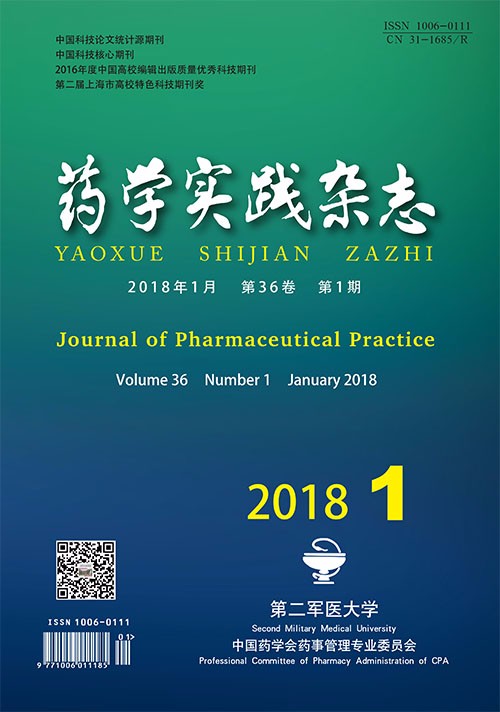|
[1]
|
尼富苓,王霞,田艳平.208例药品不良反应报告分析[J].中国药物应用与监测,2015,12(4):227-230. |
|
[2]
|
杨廉平, 练美容, 黄惠明.广东省清远市2008~2010年各年第一季度药品不良反应报告分析[J]. 医药导报2011,30(6):821-823 |
|
[3]
|
徐萌,郭凤霞,司法启,等.帕累托图分析法在提高我院临床合理用药水平中的应用[J].中国药房2013, 24(5):424-427. |
|
[4]
|
刘俊俐, 张贵清, 胡海燕,等. 鱼骨图法应用于肌内注射给药错误的原因分析及对策[J]. 当代护士(中旬刊), 2016,(12):182-184. |
|
[5]
|
徐晓华.2012年我院173例药物不良反应报告分析[J].中国实用医药,2014,9(34):11-13. |
|
[6]
|
周家梅, 江智霞, 邵星, 等.帕累托图在分级护理质量控制中应用的效果评价[J].中国实用护理杂志, 2013, 29(17):73-74. |
|
[7]
|
张菁,吴荣,徐旻. 帕累托图分析法在病房用药安全质量管理中的应用[J].护理研究, 2014, 28(2):232-233. |
|
[8]
|
高希花, 张淑丽, 张海燕,等.鱼骨图管理在降低新生儿医源性皮肤损伤中的作用[J].中外医学研究, 2015, 13(6):94-96. |
|
[9]
|
孙福珍,张淑玲.老年药品不良反应报告80例分析[J].中国当代医药,2013, 20(3):159-160. |
|
[10]
|
朱海静,杨积顺.某三级甲等医院2012-2013年度568例药物不良反应报告分析[J].中国疗养医学, 2014,23(11):1041-1043. |
|
[11]
|
张丽心, 田晓红.两例疑似药品不良反应的输液反应分析[J]. 药学服务与研究, 2016,16(2):140,154,157. |
|
[12]
|
宋素异,白瑞霞.665例药品不良反应报告回顾性分析[J].中国医院用药评价与分析,2015,15(7):970-971. |
|
[13]
|
黄旭慧,蔡加琴,阳丽梅. 临床药师参与口服靶向药物不良反应的管理模式及效果评价[J].中国药学杂志,2015, 50(19):1739-1742. |
|
[14]
|
孟蕾, 栾智鹏, 储文功. 基于文献计量的我国医疗机构药品不良反应监测分析.[J]. 药学实践杂志, 2016, 34(3):227-231. |
|
[15]
|
王爱军,金永新,要林青.充分发挥临床药师的作用确保肿瘤患者用药安全[J].中国药事,2012,26(2):203-205. |
|
[16]
|
徐明琴,陈林,张静霞,等. HPSEC法测定注射用头孢匹胺钠中聚合物的含量[J].国外医药(抗生素分册),2014,35(3):131-133. |
|
[17]
|
胥琼. 肿瘤放化疗中的不良反应对策[J].中国医药指南, 2014,12(22):237-238. |
|
[18]
|
冯娟,勒毅华,杨瑾,等. 275例抗肿瘤药不良反应分析[J].中国药物与临床,2015,15(8):1186-1188. |
|
[19]
|
彭文宣.中药制剂不良反应的监测结果分析和用药管理对策探讨[J].湖南中医药大学学报,2013,33(6):97-98. |
|
[20]
|
潘莹,刘韬,梁蔚婷,等.由166例中药不良反应事件/报告分析看中药安全用药[J].中国医院药学杂志,2016,36(2):145-148. |
|
[21]
|
秦林飞.中药不良反应原因分析与预防措施[J].中医临床研究,2015,7(35):131-132. |
|
[22]
|
刘碧波,蔡国宁,朱建君.251例中药不良反应报告分析[J].中南药学,2007, 5(6):564-566. |
|
[23]
|
靳荣.对108份中成药说明书内容的调查与分析[J].中医药管理杂志,2012,20(7):643-644. |
|
[24]
|
刘翠丽,田春华,冯红云.医疗机构如何做好药品不良反应监测工作[J].中国药物警戒,2012,9(4):224-226. |
|
[25]
|
李旭梅.复方氨基酸注射液致静脉炎反应2例[J].中国药师,2008,11(11):1400. |
|
[26]
|
苏庆玲.20AA复方氨基酸注射液不良反应的临床观察及护理措施[J]. 甘肃科技纵横,2015, 44(1):111-112. |
|
[27]
|
郦尧旺,陈亚媚,朱光辉.静脉滴注脂肪乳致不良反应70例文献分析[J].中国药业,2010,19(17):58-59. |
|
[28]
|
张武标,王晓珉,邵丽丽.127例药物不良反应报告分析[J].临床合理用药杂志,2015,8(26):71-72. |









 DownLoad:
DownLoad: